1961 Corvette Overview – The Ultimate Guide
By late 1960, the Corvette had demonstrated again that it was a serious contender on the race track, both in the mainstream media and in the automotive marketplace. CBS television, in cooperation with General Motors, introduced the series “Route 66”. (While it was common in that era for automotive manufacturing companies to sponsor television programming, this particular series featured a story about two guys who sought adventure in their shiny, new Corvette).
Bill Mitchell had begun the process of developing a prototype for an all new Corvette that would go on to become known as the “Mako Shark I.” He had also championed a team of Chevrolet designers in developing both cosmetic and performance upgrades to the existing C1 body styling.
With Corvette sales consistently increasing over the previous two model years, General Motors executives decided to review some of Mitchell‘s designs and made the decision to “green light” a restyling of Corvette for the 1961 model year.
The most pronounced of Mitchell’s changes was the introduction of a freshened rear end design. The “ducktail” design (as it has become known amongst Corvette enthusiasts) was virtually lifted from the Stingray race car as well as Mitchell’s XP-700 show car
From a practicality standpoint, the redesign of the rear end of the Corvette enabled an increase in available luggage space by twenty percent (20%). The new rear end also showcased a pair of small, round taillights on each side of the license plate recess. (These re-designed tail lights would become synonymous with Corvette and would be a standard feature (in one form or another) on all future generations of Corvette).
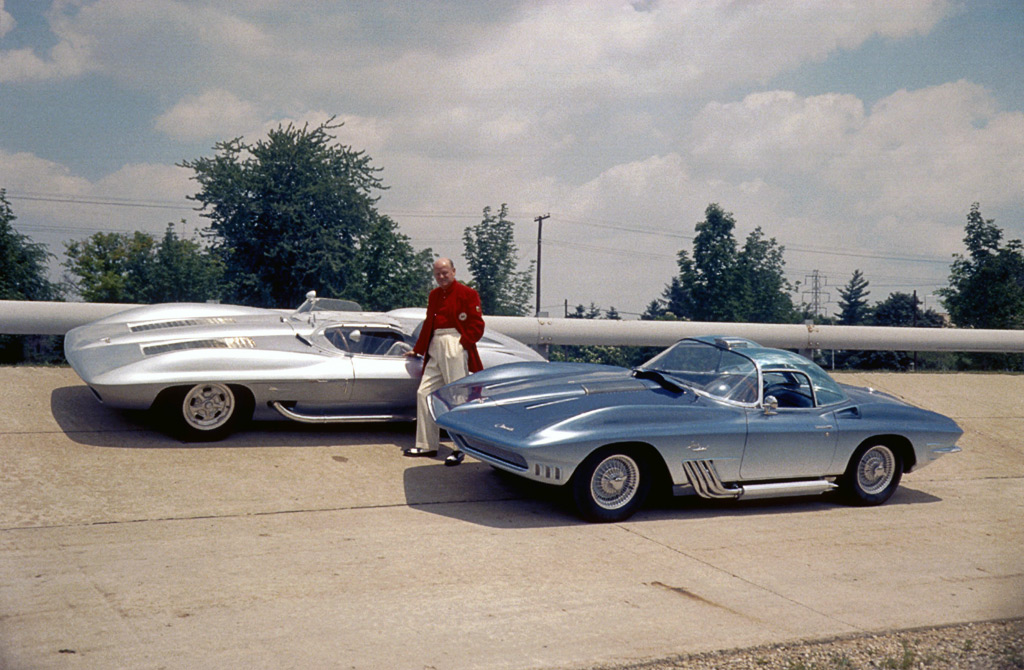
A simple vertical crease line ran down the middle of the rear deck lid, passing evenly through the traditional, big, round Corvette emblem. The rear end of the car now featured a pair of small chrome bumpers that framed a third, small, chrome, “arch” bumper that wrapped around the license plate well.
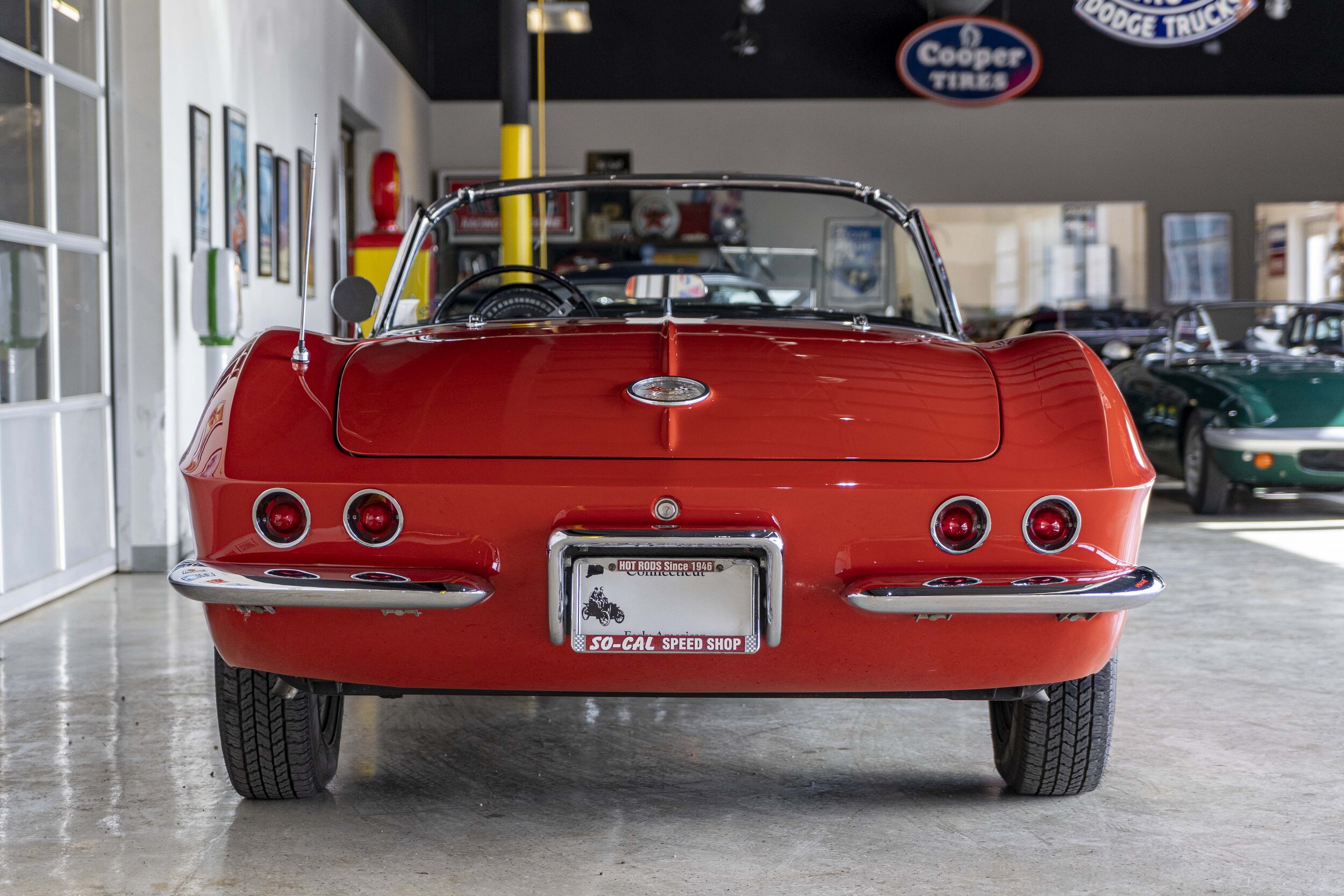
On the front end of the car, Mitchell redesigned the layout of the dual headlamp system, providing Corvette with a more streamlined version of the of the existing four lamp nose. Headlight bezels were no longer available in chrome, but instead were painted to match the rest of the body. Likewise, the chrome “teeth” grill was replaced with a fine wire mesh insert that was finished in argent silver. The round Corvette emblem that resided on the front nose of the car was replaced with individual block letters that spelled out the car’s name. This was topped with a larger version of the Corvette’s crossed-flags insignia.
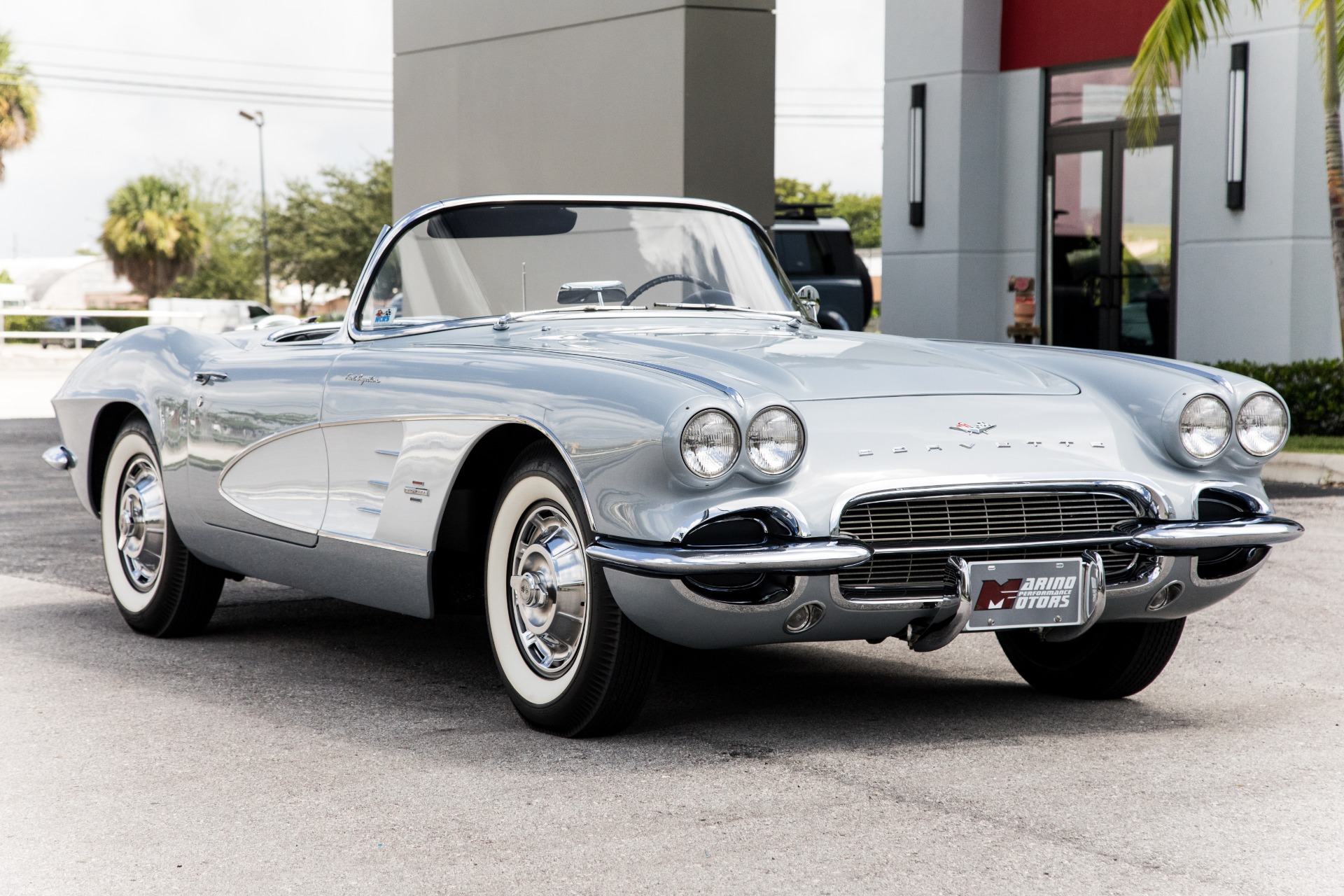
Other improvements were made to the Corvette’s body as well, though some were not physical changes to the actual lines of the Corvette so much as an evolution in the quality of how those body lines were put together.
With improvements in fiberglass manufacturing combined with refined assembly processes improving the car’s fit and finish, the 1961 Corvette was quickly recognized by critics and enthusiasts alike as the best built Corvette yet.
While the exterior received subtle improvements to it’s overall appearance, the interior of the 1961 Corvette went virtually unchanged from it’s predecessors. To increase space within the two seat cockpit, the transmission tunnel was slightly narrowed, though this single change did little to affect the overall appearance of the car‘s interior. Cosmetically, even the color options stayed largely the same. Four interior colors were made available: black, red, fawn, and blue.
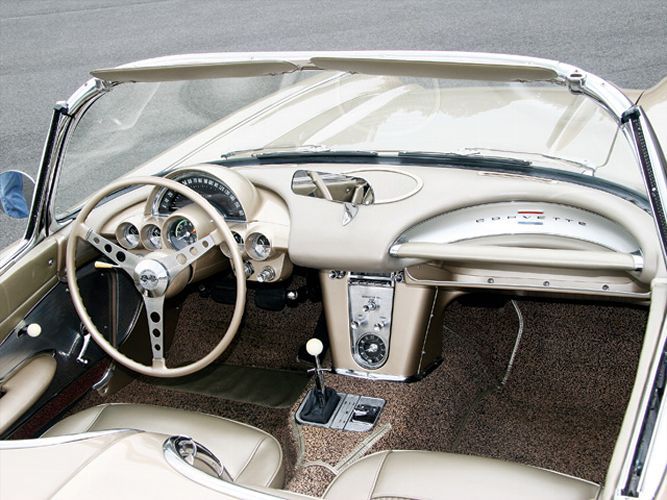
Of course, as the Corvette continued to evolve, so did the standard features that came with it. With a base price of $3934, the Corvette now included windshield washers, sun visors, a thermostatically controlled radiator fan and a parking brake warning light. The installation of a heater was still an option in 1961, as was the addition of a four speed manual transmission. With respect to the latter, nearly seventy five percent (75%) of all Corvette customers paid the extra $188.30 to purchase the four-speed manual transmission, which was now clad in aluminum that shaved fifteen pounds from the overall weight of the car.
Interestingly, air conditioning, power steering and power brakes were still unavailable, even as optional equipment, on the 1961 Corvette. However, the “Wonder Bar” signal-seeking AM radio remained available, as did the Positraction limited-slip differential, “wide” whitewall tires, electric windows, and a power operated manual top.
DID YOU KNOW: The 1961 Corvette would be the last Corvette to offer a consumer the option of purchasing bodyside cover in contrasting paint colors. A mere $16.15 option in 1961, this was an option that most consumers readily ordered when purchasing a new Corvette. The 1961 Corvette was also the last model year to offer the option of “wide” whitewall tires as well as the last model year to offer the 283 cubic inch V-8 that helped launch Corvette into stardom!
Mechanically, the 1961 Corvette was much like it’s 1960 predecessor. However, an aluminum radiator took the place of the previous copper-core unit. By adding an aluminum radiator, Chevrolet improved the cooling capabilities while further reducing the car’s overall weight. Side mount coolant-expansion tanks were added as a running change.
The available engines were essentially just carryovers from the 1960 Corvette. There were five, different versions of Chevy’s respected 283 cubic-inch V-8 engine made available to consumers, of which two were fuel injected. The three speed manual transmission gearbox remained the standard option but was now offered with a wider choice of axle ratios. Powerglide automatic transmissions continued to be made available as an optional transmission, though the automatic transmission did not have enough sheer strength to handle the additional torque associated with the larger engines.
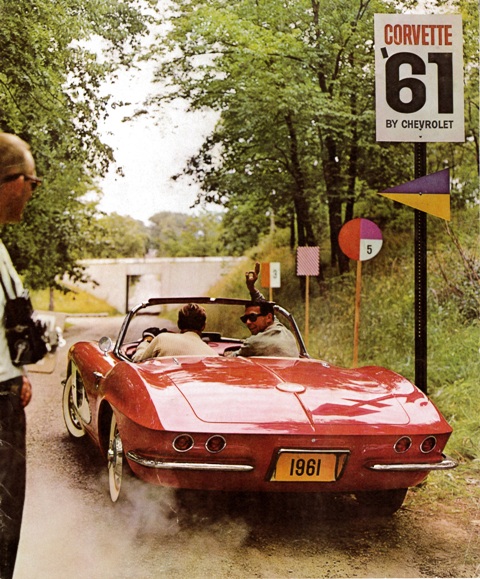
Besides, most Corvette enthusiasts were now actively seeking out manual transmissions, proved by the fact that nearly 90 percent of all the Corvette’s sold in 1961 were built with a manual gearbox. While Corvette continued to delay the incorporation of an independent rear-suspension, this did nothing to hurt the vehicle in sales or in performance.
Automotive testers were enamored with the quality of the 61’s handling ability, and none of them identified any specific deficiencies or lacking in quality of handling due to the absence of an independent rear suspension. By the standards of that time, the Corvette was now recognized as one of the most roadworthy cars in the world.
Production Numbers
In 1961 hopes were high for big growth in Corvette production and while the numbers didn’t move much, Chevy was still able to produce 10,939 units for the 1961 model year. This model year had some important updates including the first to include aluminum radiators as standard equipment. Cosmetically a big improvement was moving the exhaust to exit the car under the rear bumper instead of out of the bumper itself which stopped the bumpers from getting dirty from exhaust fumes and gasses. The rear was completely redesigned to include the 4 tail lights that we now expect on a Corvette, the first year for that. The front of the car was the first that did not have the heavy teeth of previous years. See full production number breakdown.
1961 Corvette Specifications & Performance
See the complete breakdown of technical specifications for the 1961 Corvette, including engine, suspension, brakes, body dimensions, and power. Read more: 1961 Corvette Specifications.
Engine & Transmission
With all the change taking place on the outside, it’s a bit surprising how little was done on the inside of the car. The only obvious difference was that a narrower transmission tunnel gave the car a small amount of extra interior room. There was also no change under the hood. All cars came with a 283 CID V8, though power output depended on which version of this engine was chosen. Base models included a single 4-barrel carburetor that was rated at 230 horsepower, while two versions of a 2×4-barrel motor boosted output to 245 and 270. On the top end of performance were two fuel-injected engines. The performance of these two had been increased the previous year, and were now producing 275 and 315 horsepower.
Performance
Car Life tested both the 283ci/315hp and 283ci/230hp cars and both were decent performance given the era. The 283ci/315hp was good for 5.5 second sprint to 60 mph and a 14.2 second quarter mile time, while the 283ci/230hp was good for a 7.7 second sprint to 60 mph and a 16.5 second quarter mile time. SportsCar Illustrated Dec 60 tested the 283ci/315hp and got a 6.0 sec 0 – 60 mph and 15.5 second quarter mile time at 106.0 mph. Read more: 1961 Corvette Performance & Specifications.
1961 Corvette Vehicle Identification Numbers (VIN)
The last six digits begin at 100001 and run thru 110939. Each Vehicle Identification Number (VIN) is unique to an individual car. For all 1961 Corvettes, the location of the Vehicle Identification Number (VIN) is stamped on a stainless steel tag and secured to the steering column in the engine compartment. Read more: 1961 Corvette VINs.
1954 Corvette Price & Options
Core Features & Factory Options
Corvette styling was substantially upgraded in 1961. Although enthusiasts at the time did not know it, they were being given a sneak peak of things to come. The rear would carry over to 1963, which would be a pivotal year in Corvette history. The “ducktail” design (below) of the 1961 (and ’62) would be known as “transitional” years. The exhaust now exited below the body and not via an opening in the bumper as in previous years. The four round tail lights was the start of a Corvette tradition that would continue for more than 50 years. Other changes for 1961 included the addition of sun visors, an aluminum radiator, parking brake warning lamp, interior lights and the windshield washer being made standard equipment. The four speed transmission featured an aluminum case.
Colors
The exterior color options and volumes for the 1961 Corvette were: Tuxedo Black 1,340 (12.25%), Ermine White 3,178 (29.05%), Roman Red 1,794 (16.40%), Sateen Silver 747 (6.83%), Jewel Blue 855 (7.82%), Fawn Beige 1,363 (12.46%), Honduras Maroon 1,645 (15.04%). See the full color details, including interior colors here.
Pricing
The Base Corvette with 283 cu. in. 230 hp engine and three speed manual transmission came in at $3,934.00 in 1961.
| CODE | DESCRIPTION | QUANTITY | RETAIL PRICE |
| 867 | Base Corvette Convertible | 10,939 | $3,934.00 |
| 101 | Heater | 10,671 | $102.25 |
| 102 | AM Radio, signal seeking | 9,316 | $137.75 |
| 242 | Positive Crankcase Ventilation (California) | – | $5.40 |
| 276 | Wheels, 15 x 5.5 (5) | 337 | $0.00 |
| 290 | Whitewall Tires, 6.70 x 15 | 9,780 | $31.55 |
| 313 | Powerglide Automatic Transmission | 1,458 | $199.10 |
| 353 | 283ci, 275HP Engine (Fuel Injection) | 118 | $484.20 |
| 354 | 283ci, 315HP Engine (Fuel Injection) | 1,462 | $484.20 |
| 419 | Auxillary Hardtop | 5,680 | $236.75 |
| 426 | Power Windows | 698 | $59.20 |
| 440 | Two-Tone Exterior Paint | 3,351 | $16.15 |
| 468 | 283ci, 270HP Engine (2×4 Carburetors) | 2,827 | $182.95 |
| 469 | 283ci, 245HP Engine (2×4 Carburetors) | 1,175 | $150.65 |
| 473 | Power Operated Folding Top | 442 | $161.40 |
| 675 | Positraction Rear Axle | 6,915 | $43.05 |
| 685 | 4-Speed Manual Transmission | 7,013 | $188.30 |
| 686 | Metallic Brakes | 1,402 | $37.70 |
| 687 | Heavy Duty Brakes and Special Steering | 233 | $333.60 |
| 1408 | Blackwall Tires, 6.70 x 15 Nylon | – | $15.75 |
| 1625 | 24 Gallon Fuel Tank | – | $161.40 |
Read more: 1961 Corvette pricing and factory options.
1961 Corvette Gallery
While the styling of the 1961 Corvette was not a drastic departure from the previous models, it was a welcome update that would carry the car through the end of the first-generation models the following year. Much of the restyling is attributed to Bill Mitchell, who had replaced Harley Earl as GM’s design chief. Earl was responsible for designing the original Corvette.
By far the biggest difference between the 1960 models and those of 1961 was the rear of the car. The new back end shape would be a forecast of the second-generation Corvettes that would be introduced in 1963. The dual exhaust exited below the body for the first time in 1961 – they had previously came out through the bumper guards. Additionally, modified versions of those four new small, round taillights have adorned every Corvette since.
Up front, the “teeth” that had been used on Corvette grilles since 1956 we now gone, replaced by a sleeker hood that also would foreshadow coming models. Whereas previous models had had a round Corvette medallion on the hood, the new cars instead used separate block letters to spell Corvette, and topped them with a larger version of the now familiar crossed flags emblem. While buyers could still purchase cars featuring bodyside coves with a different color than the rest of the car, this would mark the last year the two-tone option was available. Another perk was that the car’s fiberglass body had once again been improved.
See full 1961 Corvette Image Gallery


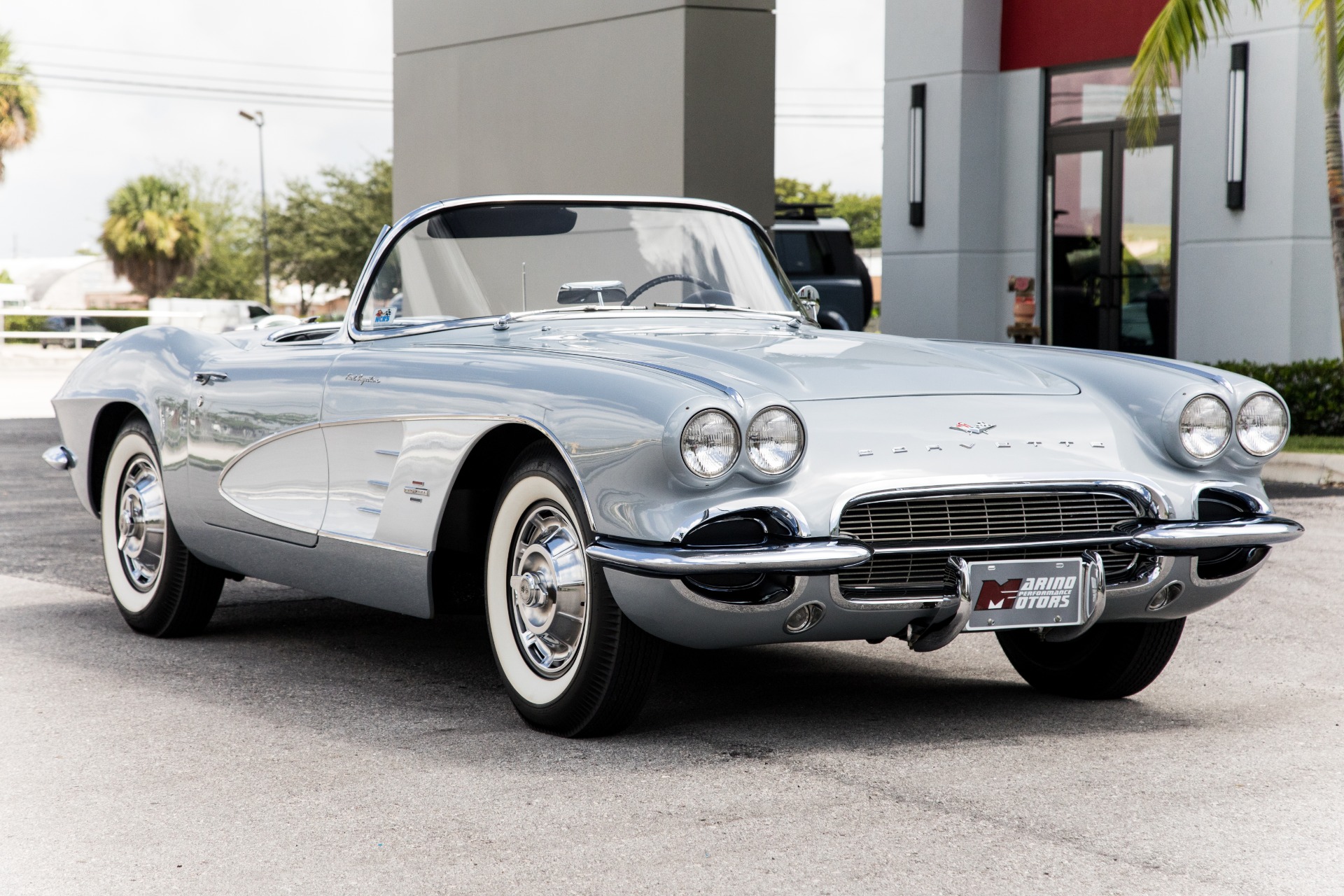
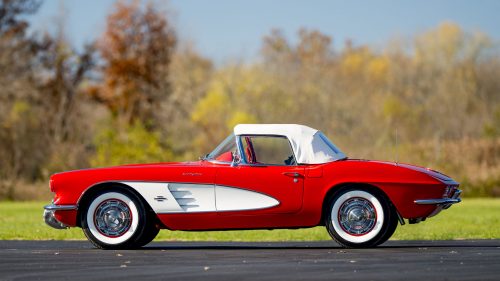
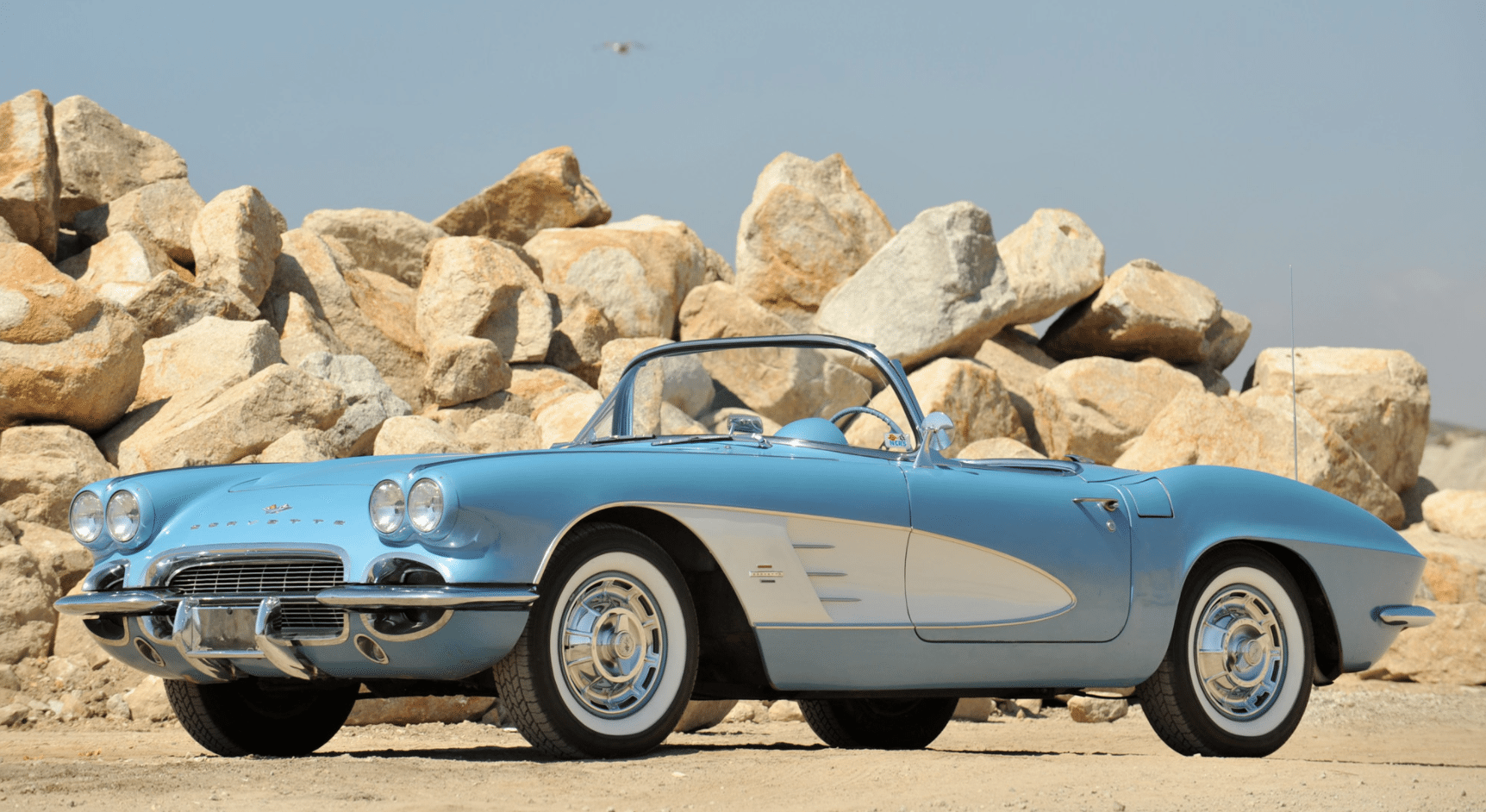
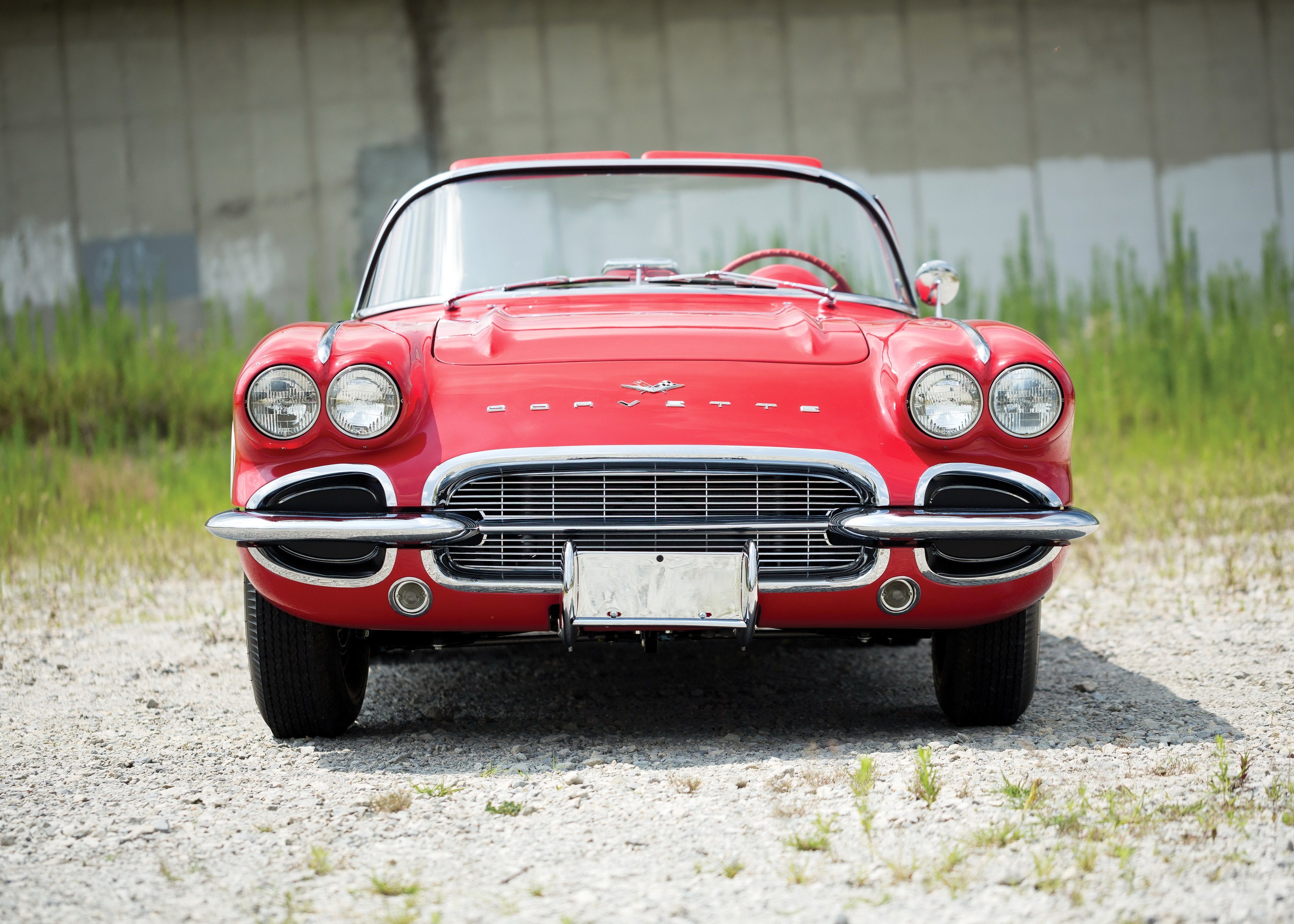
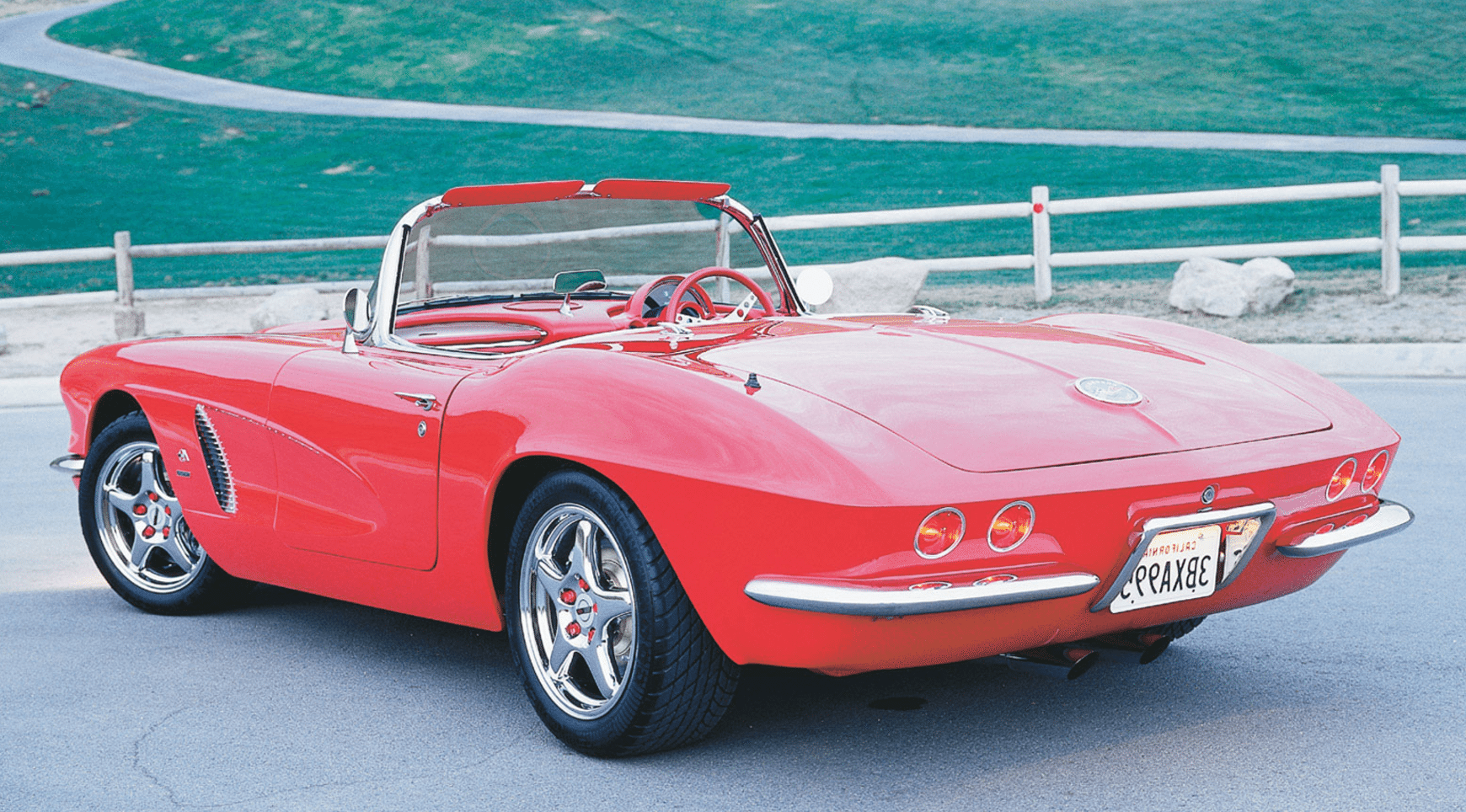

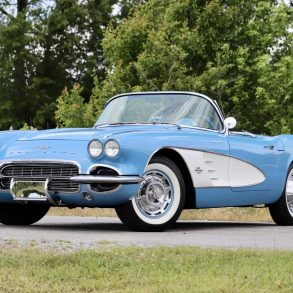

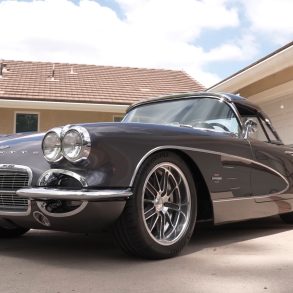
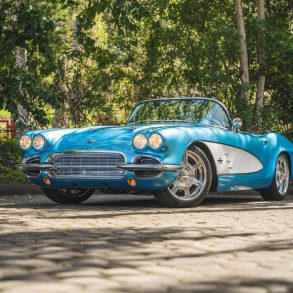
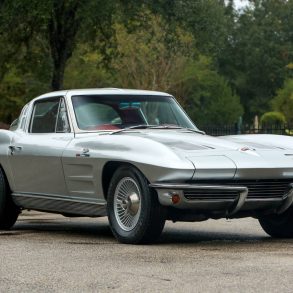
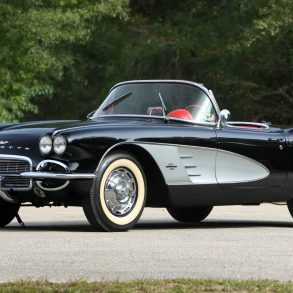
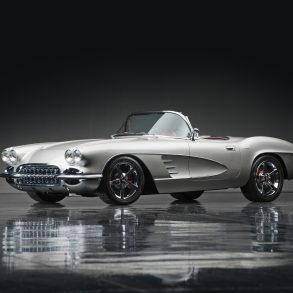
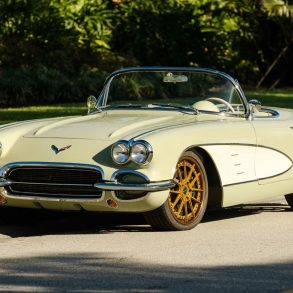

I am looking for the last three numbers on the Vin numbers for a 61 corvette that ends in 402. Do oyu know where I can learn what that means?